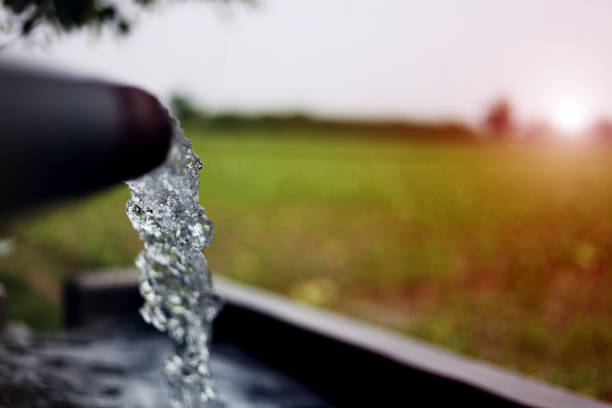News Highlight
Groundwater extraction in India saw an 18-year decline, according to an assessment by the Central Ground Water Board (CGWB) made public on Wednesday.
Key Takeaway
- The total annual groundwater recharge for the entire country is 437.6 billion cubic metres (BCM), and the annual groundwater extraction for the whole of the country is 239.16 BCM
- An assessment in 2020 found that the annual groundwater recharge was 436 BCM and extraction 245 BCM
- The 2022 assessment suggests groundwater extraction is the lowest since 2004 when it was 231 BCM.
- A detailed analysis of the information collected from the assessment indicates an increase in groundwater recharge, which may mainly be attributed to the rise in recharge from canal seepage, return flow of irrigation water and recharges from water bodies/tanks and water conservation structures.
What is the groundwater level?
- The term “groundwater level” typically refers to the depth at which soil or rock is saturated.
Causes of depleting groundwater level
- Green Revolution:
- It enabled water-intensive crops, such as rice, to be grown in drought-prone/water-deficit regions, leading to the over-extraction of groundwater.
- Furthermore, subsidies for electricity and a high MSP (Minimum Support Price) for water-intensive crops augmented the depleting groundwater level.
- Inadequate Groundwater Control:
- Inadequate ground water regulation fosters the exhaustion of groundwater resources with no penalties.
- In India, no permits are required to construct irrigation wells, and no records of abandoned wells are maintained.
- Increased demand:
- Increased demand for water for domestic, industrial and agricultural needs and limited surface water resources lead to the over-exploitation of ground water resources.
- Water is a state subject:
- Water management programmes such as water conservation and water harvesting, as well as ensuring adequate drinkable water is available to everyone in the country, are essentially the duty of the states.
- The central government, on the other hand, has taken critical steps, such as funding numerous projects.
- Poor infrastructure:
- There are enough ground water resources supported by higher monsoon rainfall in eastern Indian states. But due to a lack of enough irrigation infrastructure, farmers cannot use natural resources there.
- Poor water recharge:
- Reduction in traditional water recharging areas and rapid construction ignoring conventional water bodies.
The government Initiatives
- Atal Bhujal Yojana:
- It is a central sector scheme with World Bank assistance for sustainable management of ground water resources with community participation.
- Jal Shakti Abhiyan:
- It aims to improve water availability in water-stressed districts, particularly ground water conditions.
- The National Water Policy:
- It promotes rainwater harvesting, water conservation, and the need to augment water availability through direct rainfall.
Way forward
- Micro-irrigation techniques:
- Promote micro-irrigation techniques such as sprinkler and drip irrigation should be encouraged.
- Artificial Groundwater Recharge:
- This is the process of spreading or impounding water over land to boost infiltration via the soil and percolation to the aquifer or injecting water directly into the aquifer through wells.
- Less water-intensive crops:
- Farmers in the regions where groundwater depletion has already occurred should consider cultivating less water-intensive crops, using better irrigation technologies and irrigating crops only when necessary.
- Groundwater Management Plants
- Installing groundwater management plants at local levels will help people know the groundwater availability in their area, making them use it wisely.
- Promotion of Pani Panchayats:
- Pani Panchayat is a voluntary activity of a group of farmers engaged in the collective management (harvesting and distribution) of surface water and groundwater (wells and percolation tanks).
The Central Ground Water Board (CGWB)
- About
- The Central Ground Water Board is a subordinate office of the Ministry of Jal Shakti.
- Origin
- The Central Ground Water Board was established in 1970 by renaming the Exploratory Tube wells Organisation under the Ministry of Agriculture, Government of India.
- It was merged with the Ground Water Wing of the Geological Survey of India in 1972.
- Duties
- It is the National Apex Agency entrusted with the responsibility of providing scientific inputs for the management, exploration, monitoring, assessment, augmentation and regulation of groundwater resources of the country.
- Composition
- It is a multi-disciplinary scientific organisation consisting of Hydrogeologists, Geophysicists, Chemists, Hydrologists, Hydrometeorologists and Engineers and has its headquarters in Faridabad, Haryana.
- It is headed by the Chairman and has four main wings, namely:
- Sustainable Management and Liaison
- Survey, Assessment and Monitoring
- Exploratory Drilling and Materials Management
- Water Quality and Training and Technology Transfer
Content Source: The Hindu



